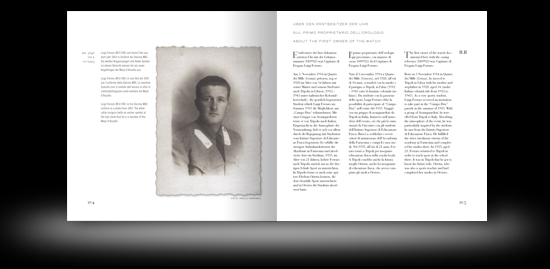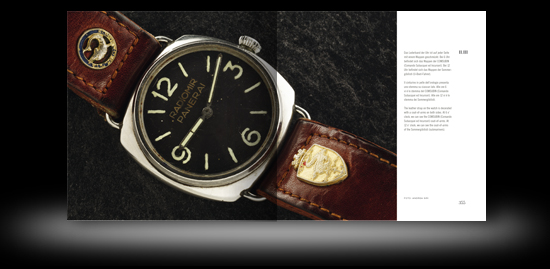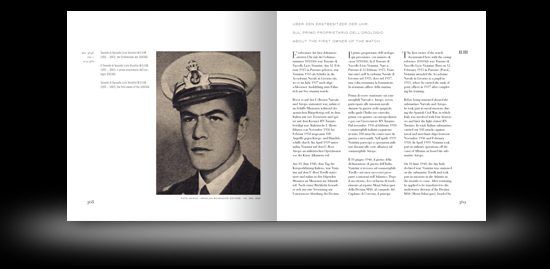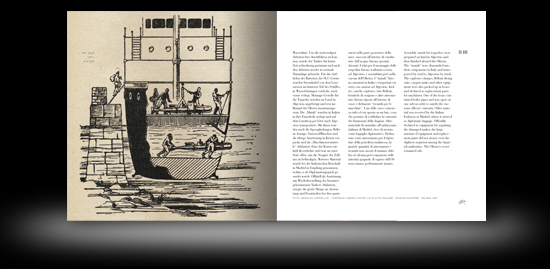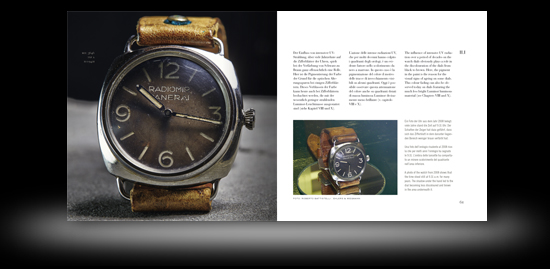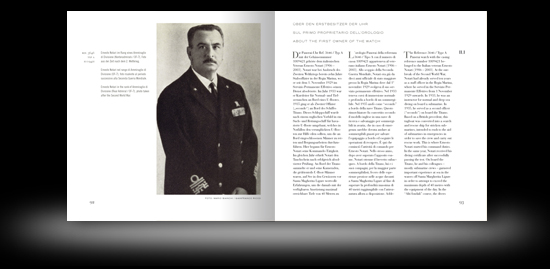Shipment information
by autor on Feb.06, 2016, under FAQ
 We use DHL service for shipping our books worldwide. You can follow your book shipment online with the “DHL Track & Trace” function or with the free DHL app (apple iOS or android) for mobile devices. The DHL shipment notification will be sent to the e-mail you provided in your order from DHL. This notification includes the tracking number of your shipment and a link to the DHL website, where you can switch language e.g to English or French.
We use DHL service for shipping our books worldwide. You can follow your book shipment online with the “DHL Track & Trace” function or with the free DHL app (apple iOS or android) for mobile devices. The DHL shipment notification will be sent to the e-mail you provided in your order from DHL. This notification includes the tracking number of your shipment and a link to the DHL website, where you can switch language e.g to English or French.
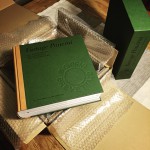 Each book will be delivered in a fit-to-size cardboard box for best protection during shipping. Please note that one parcel can weight more than 5 kg / 11 lbs because of the heavy weight of the books.
Each book will be delivered in a fit-to-size cardboard box for best protection during shipping. Please note that one parcel can weight more than 5 kg / 11 lbs because of the heavy weight of the books.
You can save shipping costs. If you order more than one book, shipping will be charged only for one book, all further books will be shipped free of charge (but with the same DHL service and protection as described above).
Important update (17 September 2025) regarding orders from the USA:
An executive order came into effect on August 29, 2025. Since then, customs duties have been levied on all commercial shipments. Since August 22, 2025, DHL has stopped accepting business parcels to the USA, with the exception of express shipments. These are still possible, but at significantly higher costs.
The new regulation makes our business model for shipments to the USA (as it has been before) unprofitable. This has forced us to charge an additional express fee of 60 EUR on top. Please contact us by email for further information and how to proceed orders to the USA: book@vintagepanerai.com
Our database – an interim status on 1 January 2026
by Volker on Jan.03, 2026, under Allgemein
What happened after 1 January 2016 when we “paused” counting new entries in our database for a moment to complete our book set “The References”? We continued to count and still do that – since 2003 (…23 years ago). January 2026 was time to pause again and see how our records have changed in numbers of known watches in our database. The total number of all historic Panerai watches in our database from the 1930’s to the 1960’s has grown to 456 known watches.
Back in 2016 we had 211 entries of the Reference 3646 in our database (seven different number groups, from 3646 / Type A to 3646 / Type G). Since then, 57 watches of the References 3646 have been added into our records, making a total of 268 watches of the reference 3646 today. Find an interim status on 1 January 2026 below:
Reference 2533: 3 examples known (2016: 3)
Reference 3646 / Type A: 18 classified (2016: 18)
Reference 3646 / Type B: 21 classified (2016: 16)
Reference 3646 / Type C: 68 classified (2016: 52)
Reference 3646 / Type D: 108 classified (2016: 79)
Reference 3646 / Type E: 32 classified (2016: 26)
Reference 3646 / Type F: 11 classified (2016: 11)
Reference 3646 / Type G: 10 classified (2016: 9)
Mare Nostrum Chronograph: 1 example known (2016: 1)
The watches made by Guido Panerai & Figlio after the Second World War, those with solid lugs, references 6152, 6154, 6152/1 and GPF 2/56 as well as the transitional references and those with Angelus movements increased from 162 to 183. Most additions are watches of the reference 6152/1 – all four versions (Rolex and Angelus movements, Rolex crown and Panerai crown guard) increased from 103 (2016) to 120 specimen classified in our database on 1 January 2026.
Reference 6152 / Type A: 7 classified (2016: 7)
Reference 6152 / Type B: 2 classified (2016: 2)
Reference 6154: 18 classified (2016: 15)
Reference 6152/1 Rolex with Rolex crown: 25 classified (2016: 23)
Reference 6152/1 Rolex with Panerai crown guard: 75 classified (2016: 64)
GPF 2/56 Angelus: 27 classified (2016: 25)
Reference 3646 Angelus: 5 classified (2016: 5)
Reference 3646 Transitional: 5 classified (2016: 5)
Reference 6152/1 Angelus with Rolex crown: 8 classified (2016: 6)
Reference 6152/1 Angelus with Panerai crown guard: 12 classified (2016: 10)
At this point, again, we want to thank those who shared information on the watches lined up above with us. Auctioneers, collectors, family members of veterans and their friends.
Ralf Ehlers & Volker Wiegmann
Naval heritage – Luigi Ferraro’s Radiomir
by Volker on Dec.26, 2025, under Allgemein
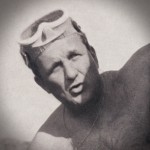 Without a doubt, Luigi Ferraro was a man whose entire life was shaped by the sea. As a talented swimmer, he had been fascinated by the element of water since his youth. During the Second World War, he became one of the best-known frogmen of all time and showed great courage and skill during his dangerous missions, taking himself into the very limits both physically and mentally.
Without a doubt, Luigi Ferraro was a man whose entire life was shaped by the sea. As a talented swimmer, he had been fascinated by the element of water since his youth. During the Second World War, he became one of the best-known frogmen of all time and showed great courage and skill during his dangerous missions, taking himself into the very limits both physically and mentally.
His Radiomir watch, a Ref. 3646 / Type B with riveted plastic dial, has been with him since he was a “Gamma” frogman in the Second World War. With the kind support of his family we were able to document his watch in chapter II.II of our book “The References” together with a view onto his life – before, during and after the war.
Page 194 – 195: View on the engraved caseback of Luigi Ferraro’s 3646 / Type B.
In January 1943, Luigi Ferraro obtained his qualification to carry out underwater missions. He was first posted to North Africa, where he was to attack ships from the British armed forces in the Port of Tripoli. Before the attack could take place, he was ordered back to Italy. Soon later he became an instructor for “Gamma” frogmen of the Mezzi d’Assalto. In May 1943, he was posted to La Spezia and received instructions from Junio Valerio Borghese for a new mission – this time, in the eastern Mediterranean.
Page 204 – 205: About the first owner of the watch. Luigi Ferraro in uniform, photo dated to 1943. The white collar insignia (with an anchor symbol at the top) show that he is a member of the Mezzi d’Assalto.
Luigi Ferraro carried out four missions during July and August 1943 in the Turkish ports of Alexandretta and Mersina. These four missions resulted in the sinking of two ships and the deactivation of a third. Undiscovered and highly successful, the “Operazione Stella” was one of the most effective operations of the Mezzi d’Assalto. Luigi Ferraro was awarded with the M.O.V.M. (gold medal for galantry at war) in the rank of Tenente Artiglieria.
Page 210 – 211: Sketch of two of the four “Stella” missions carried out by Luigi Ferraro in Alexandretta.
After his time as a “Gamma” frogman, he used the skills and abilities he had learnt in the war for civilian purposes. He was able to pass on his extensive knowledge and significant experience to countless divers. Luigi Ferraro was promoted by the Marina Militare to Capitano di Fregata di Complemento in the year 2000.
The watch of Luigi Ferraro (1914 – 2006) and the history behind can be read in the book “The References” 1930’s-1940’s (chapter II.II, page 190 to 225). Read more on “Operazione Stella” here. Enjoy reading!
Naval heritage – Licio Visintini’s Radiomir
by Volker on Dec.24, 2025, under Allgemein
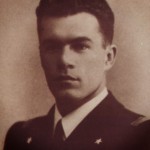 SLC pilot Tenente di Vascello Licio Visintini M.O.V.M. took part on several missions against the allied fleet in Gibraltar as a member of the Mezzi d’Assalto.
SLC pilot Tenente di Vascello Licio Visintini M.O.V.M. took part on several missions against the allied fleet in Gibraltar as a member of the Mezzi d’Assalto.
After returning from the SLC missions B.G.3, being pilot of SLC 160 in May 1941 and B.G.4, being pilot of SLC 220 in September 1941 (both carried out from the transport submersible “Scirè” under the command of Junio Valerio Borghese), Licio Visintini, twice awarded with the silver medal for galantry at war (M.A.V.M.), returned to Gibraltar undercover in June 1942. He built the core of the “Orsa Maggiore” on board the tanker Olterra – the new, hidden base for the SLC units in the bay of Gibraltar (which remained undiscovered until September 1943). Read more on the Olterra here.
After months of preparations and training in complete secrecy, the SLC mission B.G.5 took progress in December 1942 with three SLC devices of the 200-series: 228, 229 and 236. For Licio Visintini, Giovanni Magro and Salvatore Leone it was a missions with no return. Read the complete story about their fateful SLC mission and how Licio Visintini’s Ref. 3646 / Type C with “Radiomir Panerai” dial returned to Italy and changed ownership two times after, on page 368-397.
Page 354 – 355: Licio Visintini’s 3646 / Type C. The strap has been decorated with coat-of-arms of the Sommergibilisti (submariners) and COMSUBIN (Raggruppamento subacquei e incursori “Teseo Tesei”). The Rolex movement of the watch has been introduced here.
Page 368 – 369: About the first owner of the watch. Tenente di Vascello Licio Visintini M.O.V.M.
Page 386 – 387: Illustration of the secret SLC base Olterra at the pier in Algeciras / Bay of Gibraltar.
The watch of Tenente di Vascello Licio Visintini (1915 – 1942) and the history behind can be read in the book “The References” 1930’s-1940’s (chapter II.III, page 350 to 397). Read more on Licio Visintini here. Enjoy reading!
Naval heritage – Ernesto Notari’s Radiomir
by Volker on Dec.22, 2025, under Allgemein
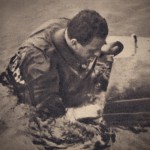 Since 1992, the Vintage Panerai watch which was worn by SLC pilot Ernesto Notari during the Second World War, is on display at the Museo Tecnico Navale in La Spezia. Back then, the watch’s first owner decided to give the watch to the museum on his own wish. It was accepted into the museum’s inventory and since then, it has been on display in a cabinet with other rare items from the Mezzi d’Assalto, where it is resting on one of the last remaining SLC devices.
Since 1992, the Vintage Panerai watch which was worn by SLC pilot Ernesto Notari during the Second World War, is on display at the Museo Tecnico Navale in La Spezia. Back then, the watch’s first owner decided to give the watch to the museum on his own wish. It was accepted into the museum’s inventory and since then, it has been on display in a cabinet with other rare items from the Mezzi d’Assalto, where it is resting on one of the last remaining SLC devices.
In its unaltered original condition, it was an important source of information for us. With the support of the museum we were able to enter all details of the watch into our database. Beside the importance by the history behind, this watch marks the earliest known 3646 / Type A and so became the first watch in chapter II. With its engraved caseback it is of enormous significance with regard to the history of the Mezzi d’Assalto of the Royal Italian Navy.
Page 60 – 61: Comparing photos of Ernesto Notari’s Ref. 3646 / Type A from 2014 and 2008.
Being a member of the Mezzi Subacquei, Ernesto Notari trained at Bocca di Serchio, the secret base of the underwater special unit in Tuscany. In early 1940, the first training exercises were carried out, resulting in the 1935 concept of Teseo Tesei and Elios Toschi evolving into a real, secret weapon. After the desaster of Malta in July 1941, Ernesto Notari was commander of the training base Bocca di Serchio.
In 1943 Notari posted to the secret base in the Bay of Algeciras, the Olterra. After the successful return from mission B.G.6 in May 1943, Notari was awarded with the M.A.V.M. (silver medal for galantry at war) in the rank of Capitano di Corvetta. He solved another successful mission in August 1943: B.G.7, for which he was awarded M.A.V.M. one more time. B.G.7 was the last mission carried out from the tanker Olterra. The declaration of the ceasefire by Italy on 8 September 1943 brought all further plans to an end. The secret of the Olterra was only discovered by the British in October 1943. The undercover missions of the Decima MAS in Gibraltar were therefore highly successful. Although they did not have any major successes like in Alexandria, the continued presence of the Decima for a period of almost three years exercised constant pressure on the British. The use of Villa Carmela and the Olterra as secret starting bases for night-time missions showed the decisiveness of the Decima MAS and its courageous men – one of whom was Ernesto Notari.
Page 150 – 151: Illustration of the missions completed by the “Orsa Maggiore” in the Bay of Algeciras in 1942 and 1943.
After the Second World War, Ernesto Notari continued his career with the Marina Militare. As a Capitano di Fregata, he commanded the reformed special unit from 10 October 1947 to 25 September 1948. As a Capitano di Vascello, Notari served his second captaincy from 1 October 1950 to 14 March 1951. In 1952, he assumed command of the Sezione Tecnica Autonoma in Bacoli. The secret base in the province of Naples existed from 1949 to 1957 before being moved to Varignano as part of a restructuring process . This site was home to some of the remaining Mezzi d’Assalto equipment. By the end of his Navy career, Ernesto Notari had reached the rank of Vice-Admiral (Ammiraglio di Squadra).
Page 92 – 93: About the first owner of the watch, Admiral Ernesto Notari, photo taken after the Second World War.
The watch of Ernesto Notari (a Ref. 3646 / Type A with „Radiomir Panerai“ dial) and the history behind can be read in the book “The References” 1930’s-1940’s (chapter II.I, page 58 to 153). Read more on the Olterra here. Enjoy reading!
Inventors, pilots and a royal visitor…
by Volker on Dec.21, 2025, under Allgemein
The first watches for the pilots of the “new weapon” SLC were delivered in the middle of the 1930’s by Guido Panerai & Figlio to the Commando del 1° Gruppo Sommergibili of the Royal Italian Navy. According to the timeline of the development of the top secret slow running torpedos (siluro a lenta corsa, short: SLC) by the inventors Teseo Tesei and Elios Toschi, waterproof and luminous instruments for the pilots were necessary to carry out proper exercises and to control the SLC in depth and darkness.
 The chapters I and II, dedicated to the first watches for underwater use (Ref. 2533 and 3646) take the readers of our book “The References” 1930’s-1940’s into these early years. Teseo Tesei and Elios Toschi’s ideas became real. But strategic decisions after the Italo-Ethiopian War stopped the secret SLC project. The tests with these small weapons were archived and the Royal Italian Navy focused their interest in huge battleships, cruisers and destroyers.
The chapters I and II, dedicated to the first watches for underwater use (Ref. 2533 and 3646) take the readers of our book “The References” 1930’s-1940’s into these early years. Teseo Tesei and Elios Toschi’s ideas became real. But strategic decisions after the Italo-Ethiopian War stopped the secret SLC project. The tests with these small weapons were archived and the Royal Italian Navy focused their interest in huge battleships, cruisers and destroyers.
The SLC project was re-started by the 1st Flottiglia MAS in 1939 at the advent of the Second World War. With the first missions of the Mezzi d’Assalto carried out from August 1940 onwards, the demand for skilled operators as well as new equipment – and more instruments for the operators – grew fast. An early Ref. 3646 / Type A, dated to April 1940, is featured in chapter II.I followed by the timeline of the missions carried out by the operators of the Decima Flottiglia MAS, the special commandos of the Royal Italian Navy.
 The photo shows page 96 of “The References” with a historic photo from June 1940: The two inventors of the SLC, Teseo Tesei and Elios Toschi, Alberto Franzini and Gino Birindelli above their co-pilots stand together with a royal visitor: Principe Aimone di Savoia Aosta, Duca di Spoleto – just a few weeks before the first missions of the new weapon SLC were about to write naval history.
The photo shows page 96 of “The References” with a historic photo from June 1940: The two inventors of the SLC, Teseo Tesei and Elios Toschi, Alberto Franzini and Gino Birindelli above their co-pilots stand together with a royal visitor: Principe Aimone di Savoia Aosta, Duca di Spoleto – just a few weeks before the first missions of the new weapon SLC were about to write naval history.
Read more about “The birth of a legend – the first Panerai watches (1935-1939)” in chapter I, followed by the timeline of the missions during the Second World War in chapter II.I – more information on the historic content in our “The References” book set with a total of 1392 pages can be found here. Read about the featured watches from Guido Panerai & Figlio in the first and second volume here.
18 December 1941 – today in history…
by Volker on Dec.18, 2025, under Allgemein
After the failed missions in August and September 1940, the Decima MAS returned to the eastern Mediterranean in order to make another attemp to attack the Harbour of Alexandria with SLC devices of the Mezzi d’Assalto: “Operazione G.A.3”, carried out by Tenente di Vascello Luigi Durand de la Penne and Capo Palombaro I Emilio Bianchi (SLC 221), Capitano Genio Navale Antonio Marceglia and Sottocapo Palombaro Spartaco Schergat (SLC 222), Capitano Armi Navale Vincenzo Martellotta and Sottocapo Palombaro Mario Marino (SLC 223).
 What turned out to be one of the most famous SLC missions in the Second World War has been announced in the Italian War Bulletin N. 585 of the 8th of January 1942: “On the night of the 18th December assault craft of the Italian Royal Navy entered the Harbour of Alexandria and attacked two British battleships anchored there. It has only just been confirmed that a battleship of the Valiant class was seriously damaged and put into dock for repairs, and is still there.”
What turned out to be one of the most famous SLC missions in the Second World War has been announced in the Italian War Bulletin N. 585 of the 8th of January 1942: “On the night of the 18th December assault craft of the Italian Royal Navy entered the Harbour of Alexandria and attacked two British battleships anchored there. It has only just been confirmed that a battleship of the Valiant class was seriously damaged and put into dock for repairs, and is still there.”
Bulletin N. 586 of the 9th of January 1942, added the following: “In the Operation conducted by assault craft fo the Royal Italian Navy in the Harbour of Alexandria and reported in yesterday’s Bulletin we now have definite further intelligence that, in Addition to the Valiant, a second battleship of the Barham class was also damaged.”
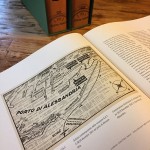 Winston Churchill announced in a speech before a secret session of the House of Commons on the 23rd of April 1942: “A further sinister stroke was to come. On the early morning of December 19 half a dozen Italians in unusual diving suits were captured floundering about in the Harbour of Alexandria… Four hours later explosions occurred in the bottoms of the Valiant and the Queen Elizabeth, produced by limpet bombs fixed with extra-ordinary courage and ingenuity, the effect which was to blow large holes in the bottoms of both ships and to flood several compartments, thus putting them both out of Actions for many months…”
Winston Churchill announced in a speech before a secret session of the House of Commons on the 23rd of April 1942: “A further sinister stroke was to come. On the early morning of December 19 half a dozen Italians in unusual diving suits were captured floundering about in the Harbour of Alexandria… Four hours later explosions occurred in the bottoms of the Valiant and the Queen Elizabeth, produced by limpet bombs fixed with extra-ordinary courage and ingenuity, the effect which was to blow large holes in the bottoms of both ships and to flood several compartments, thus putting them both out of Actions for many months…”
Read chapter II.I of our book “The References” 1930’s-1940’s to find out what happened on 18 December 1941 (page 118-125). More on the historic content in our “The References” book set with a total of 1392 pages can be found here and here. You can purchase “The References” 1930’s-1940’s in our bookstore. Enjoy reading!
18 November 1944 – today in history…
by Volker on Nov.18, 2025, under Allgemein
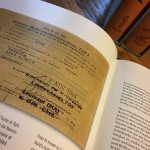 Read chapter VII of our book “History2” to find out what happened on 18 November 1944. Rare documents helped us to capture the history behind a Ref. 3646 / Type D “Kampfschwimmer” watch, which can be found in this chapter.
Read chapter VII of our book “History2” to find out what happened on 18 November 1944. Rare documents helped us to capture the history behind a Ref. 3646 / Type D “Kampfschwimmer” watch, which can be found in this chapter.
Beside photos from the years 1944 and 1945 showing the watch on the frogman’s wrist, as well as his identification papers and travel documents issued in Venice (see photo), helped us to reconstruct the route Hanns-Martin Kaufhold took to the mission grounds in the last months of the Second World War.
Read more about chapter VII of “History2” (70 pages, 58 photos, 6 technical illustrations) here. and here. You can purchase your copy of “History2” in our bookstore.
The Radiomir which returned from Gibraltar to Italy…
by Volker on Nov.09, 2025, under Allgemein
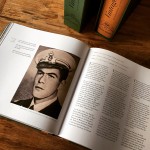 …but alone – without the SLC pilot who used it on his wrist during the mission B.G.5 in December 1942: Licio Visintini.
…but alone – without the SLC pilot who used it on his wrist during the mission B.G.5 in December 1942: Licio Visintini.
Born 1915 and enterred the Royal Italian Navy in 1933, Licio Visintini took part in several missions against the allied fleet in Gibraltar as a member of the Decima MAS. In 1941 Visintini was promoted to Tenente di Vascello. After surviving from SLC missions B.G.3 (May 1941) and B.G.4 (September 1941), carried out by the transport submersible “Scirè” under the command of Junio Valerio Borghese, Visintini returned to Gibraltar undercover in June 1942 where he built the core of the “Orsa Maggiore” on board the tanker Olterra – the hidden base for the SLC units in the bay of Gibraltar.
 According to legend, Visintini’s „Radiomir Panerai“ was returned to his mother after the end of the Second World War by his former enemy, Lieutenant „Buster“ Crabb (head of the Underwater Working Party in Gibraltar). The return of personal items to relatives showed a great respect that the combatants on different sides had for one another. Crabb, who was himself an experienced diver serving the British Navy, knew from experience all too wellt he level of courage and determination that was neccessary to carry out missions of this kind. Before Visintini’s mother died, she gave the watch to Vittorio Stradi, her son’s best friend. Vittorio Stradi was a „Gamma“ frogman in the Second World War. Fourty years later he passed the watch to his friend Isidoro Mario Nardin, who was also a member of the „Gamma“ frogmen during the Second World War.
According to legend, Visintini’s „Radiomir Panerai“ was returned to his mother after the end of the Second World War by his former enemy, Lieutenant „Buster“ Crabb (head of the Underwater Working Party in Gibraltar). The return of personal items to relatives showed a great respect that the combatants on different sides had for one another. Crabb, who was himself an experienced diver serving the British Navy, knew from experience all too wellt he level of courage and determination that was neccessary to carry out missions of this kind. Before Visintini’s mother died, she gave the watch to Vittorio Stradi, her son’s best friend. Vittorio Stradi was a „Gamma“ frogman in the Second World War. Fourty years later he passed the watch to his friend Isidoro Mario Nardin, who was also a member of the „Gamma“ frogmen during the Second World War.
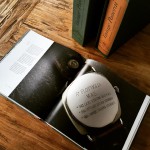 To commemorate the order of ownership, the three names were inscribed for posterity on the caseback, as shown on page 358-359 and 360. For Isidoro Mario Nardin, Licio Visintini’s Panerai watch became a symbol of cameraderie and a memento of his fallen comrade.
To commemorate the order of ownership, the three names were inscribed for posterity on the caseback, as shown on page 358-359 and 360. For Isidoro Mario Nardin, Licio Visintini’s Panerai watch became a symbol of cameraderie and a memento of his fallen comrade.
Chapter II.III in our book “The References” (first volume / 1930’s-1940’s) features the story behind this Ref. 3646 / Type C „Radiomir Panerai“ and its three owners, Licio Visintini (M.O.V.M.), Vittorio Stradi and Isidoro Mario Nardin, on page 350-397.
Information on “The References” 1930’s-1940’s (first volume) can be found here.
Enjoy reading!
[Ralf Ehlers & Volker Wiegmann]
How to visualize a frogman’s pencil written diary from 1945?
by Volker on Oct.18, 2025, under General
During the research on the history behind a Ref. 3646 / Type D “Kampfschwimmer” with engraved caseback, we were able to study the diary of the first owner of the watch. This diary survived the last days of the Second World War and the veteran kept it for decades, willed to share it with us and partially featured in chapter II of our book “History2”.
Thanks to the many detailed descriptions (e.g. the water temperature, current, weather conditions and explosive charges carried) which the frogman wrote down and the examination of historical maps of the 1940’s it was possible to analyze his diary entries precisely and visualize his memories to the readers of our book in an impressive way. The collected documents and additional information let this chapter become one of the unique stories behind a Ref. 3646 / Type D “Kampfschwimmer” watch.
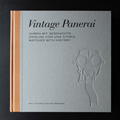 Reading page 83 of “History1” reminds on a part of our research which did happened not often. The frogman wrote the following lines in his diary at the beginning of March 1945:
Reading page 83 of “History1” reminds on a part of our research which did happened not often. The frogman wrote the following lines in his diary at the beginning of March 1945:
“The next morning we set off towards the east in a truck. With unbelievable power, the Russians have pushed thru as far as the [river] Oder in their last offensive. They even managed to build two bridgeheads at Fürstenberg [in November 1961 the city was renamed Eisenhüttenstadt]. Reconnaissance flights tell us that they are putting tremendous amounts of people and material into these bridgeheads”.
Reconnaissance flights? Having this information in mind, we started to search various archives for still existing aerial photographs – maybe the one which the frogmen mentioned in his diary still exists? After the war, some remaining photos were transferred to archives which stored these photos for bomb clearance works. Good luck on the hunt! Guess how easy this search would be? Where to start? To find a aerial photo from the same date, same area and even showing the target, not knowing if its existing at all? We found it – a needle in a haystack – the photo which was shown to the frogmen as their next target.
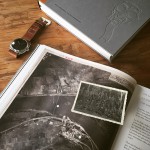 Dated to 1 March 1945, the photo taken by a reconnaissance flight shows one of the pontoon bridges built across the Oder by the Russian troops just shortly before – which became soon later the target for the “Keller Group” just as the frogman wrote it down in his diary. Read more on the diary and various historic documents which helped us to visualize this source of information during our research on a Ref. 3646 / Type D “Kampfschwimmer” watch here.
Dated to 1 March 1945, the photo taken by a reconnaissance flight shows one of the pontoon bridges built across the Oder by the Russian troops just shortly before – which became soon later the target for the “Keller Group” just as the frogman wrote it down in his diary. Read more on the diary and various historic documents which helped us to visualize this source of information during our research on a Ref. 3646 / Type D “Kampfschwimmer” watch here.
The coffee table shot shows page 110-111, chapter II of “History2” next to one of the few original photos of the “Keller Group” taken shortly before their missions at the eastern front (spot some Panerai gear in it). This photo is published on page 94 in the same chapter. The coffee table shot includes also a Ref. 3646 / Type D “Kampfschwimmer”, featured in chapter V of “History2” – the watch of frogman Siegfried Köneke, who was also a member of the “Keller Group”. Read more about this chapter here.
Our two “History” books can be ordered only in our bookstore.
Enjoy reading stories behind these watches!
[Ralf Ehlers & Volker Wiegmann]
30 September 1940 – today in history…
by Volker on Sep.30, 2025, under Allgemein
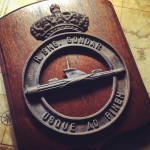 The afternoon of 30 September 1940 marks the end of the mission „Operazione G.A.2“. Just five weeks after the sinking of the Iride, the Gondar (photo: historic crest of the submarine, showing SLC containers on its deck) was the second transport submarine of the Mezzi d’Assalto to be sunk.
The afternoon of 30 September 1940 marks the end of the mission „Operazione G.A.2“. Just five weeks after the sinking of the Iride, the Gondar (photo: historic crest of the submarine, showing SLC containers on its deck) was the second transport submarine of the Mezzi d’Assalto to be sunk.
The submarine Gondar (built in 1937) under the command of Tenente di Vascello Francesco Brunetti was dispatched from La Spezia with Alexandria as her target. On board the Gondar was the officer-in-charge of mission G.A.2, Mario Giorgini, three SLC teams and a reserve team.
When the Gondar reached the target area on 29 September 1940, she received a sobering radio message from reconnaissance: The British fleet had left the Port of Alexandria – so mission G.A.2 was aborted. The Gondar headed now for Tobruk and was already on its return journey when it was discovered by the Australian destroyer, HMAS Stuart. A second destroyer, HMS Diamond and a corvette now tracked the Gondar throughout the night alongside HMAS Stuart.
 After hours of attempting to evade capture, the Gondar gave up in the early hours of 30 September 1940. Commander Brunetti gave the order to dive down and abandon the Gondar, which effectively saved his team and the SLC pilots from going down after being sunk by the mighty enemy. A British Sunderland flying boat bombarded the Gondar while the crew was already in the water – effectively sealing the fate of the second transport submersible for SLCs (see historic photos on the left). For one of the two inventors of the new weapon, Elios Toschi, this second journey was also to be his last. He was taken prisoner by the British alongside the crew of the Gondar and his comrades – “missione fallita”.
After hours of attempting to evade capture, the Gondar gave up in the early hours of 30 September 1940. Commander Brunetti gave the order to dive down and abandon the Gondar, which effectively saved his team and the SLC pilots from going down after being sunk by the mighty enemy. A British Sunderland flying boat bombarded the Gondar while the crew was already in the water – effectively sealing the fate of the second transport submersible for SLCs (see historic photos on the left). For one of the two inventors of the new weapon, Elios Toschi, this second journey was also to be his last. He was taken prisoner by the British alongside the crew of the Gondar and his comrades – “missione fallita”.
The launch of the new weapon appeared to be ill-fated: Two operations (G.A.1 and G.A.2) failed, two valuable transport submersibles had been sunk and four SLC teams and their officers-in-charge had been taken as prisoners of war. It was to take over a year until another attempt could be made to penetrate the Port of Alexandria in December 1941…
Read more about “The birth of a legend – the first Panerai watches (1935-1939)” in chapter I on page 34-39, followed by the timeline of the missions during the Second World War in chapter II.I on page 106-109. Mario Giorgini, officer-in-charge of the mission G.A.2 is also featured in the second volume of “The References” on page 1016-1022. The Gondar is also featured in our book “History1” in chapter IV on page 288-357.


